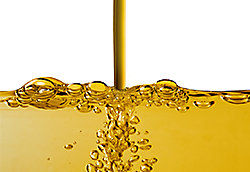Fat – and its quality – can have a dramatic impact on animal health and performance. Oxidized fats reduce gut integrity, decrease feed palatability, create toxic metabolites, destroy fat-soluble vitamins and decrease performance. Minimizing fat oxidation is therefore crucial to successful animal production.
What causes fats to oxidize? Time of storage, application of heat and the mixing of different lipid sources all have an impact on fat quality, and specifically on influencing oxidation. Oxidation is an irreversible, naturally-occurring process where fatty acids are attacked by free radicals resulting in production of harmful byproducts, including peroxides and aldehydes. This process reduces the energy value of the fat and can have deleterious effects on growth performance. Once oxidation starts, the damage cannot be undone, so preventing oxidation should be a top priority for producers.



